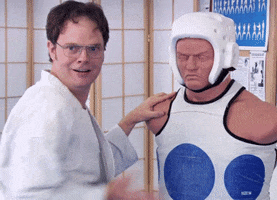The bolded is literally what Ethos does. Can take as few as 15-20 minutes on table time for a prostate plan.
Having evaluated adaptive RT on Ethos on prostate - the juice is not worth the squeeze (IMO) in vast majority of patients. There is a tiny dosimetric benefit that is unlikely to ever pan out into an actual clinical toxicity benefit.
Adaptive RT for bladder is going to potentially be a big winner, assuming we can ever nationally get enough bladder patients from the urologists to justify it despite like every study ever suggesting equipoise.
MIRAGE did not use the adaptive function of MR-Linac. Some feel comfortable with 3mm all around - I personally do 3mm post, 5mm all others including into bladder, as the prostate/bladder interface can be a bit more mobile with even slight variations in bladder filling. I also prefer doing 40/5 to the PTV with underdosing at bladder interface because that's been shown to be more effective than 36.25/5 (
Dose-response with stereotactic body radiotherapy for prostate cancer: A multi-institutional analysis of prostate-specific antigen kinetics and biochemical control - PubMed) . I get that people do 36.25 routinely, but to me that's like doing 70Gy conventional instead of 78Gy conventional. I get there isn't a randomized trial of 36.25 vs 40 (to PTV) prostate SBRT like there was with 70 vs 78, but to me it's the value of dose escalation. Unfortunately, trials like PACE-B (where they call it Rx to 40Gy but it's 40Gy to CTV and 36.25 to PTV) aren't helping us to prospectively determine the dose response curve.
There is an immense amount of variation in practice with prostate SBRT - there is a significant chunk of US ROs who will never do it, and I agree that they probably shouldn't do it. Then there's all the others who feel comfort with it but are (IMO) underdosing patients. Yes 7.25-8Gy x 5 is NCCN supported but so is 1.8-2Gy x 37-45Fx. 1.8 x 39 = 70.2.



